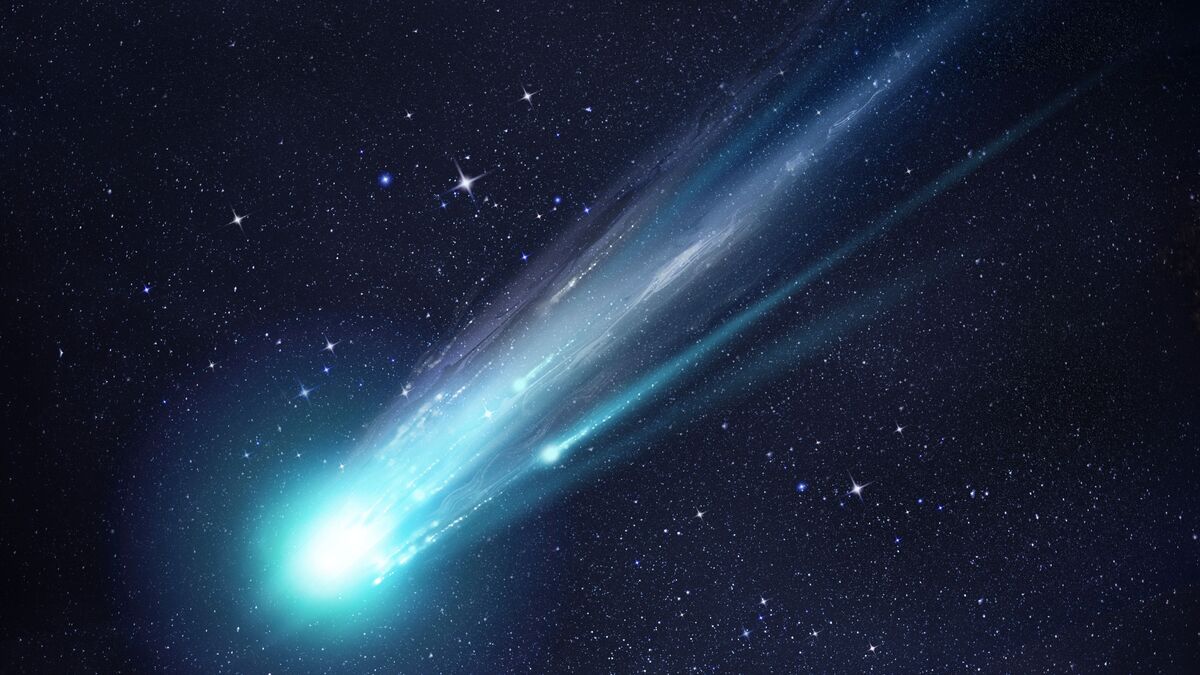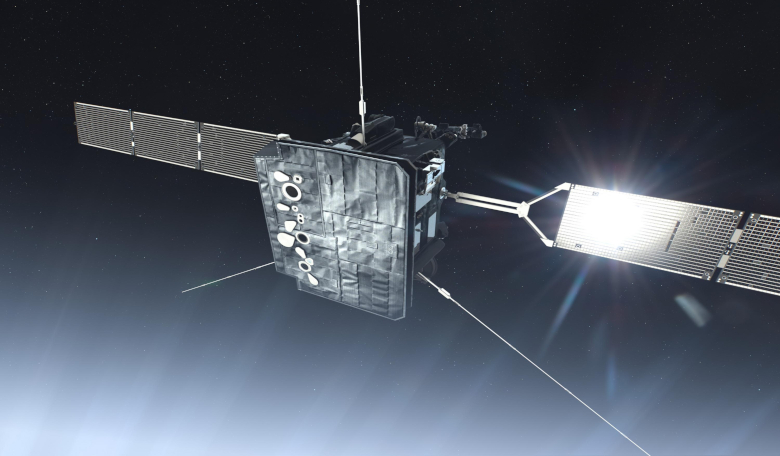Comet ATLAS, also known as C/2019 Y4 ATLAS, was first discovered on December 28, 2019, by a reflecting telescope atop Mauna Loa in Hawaii as part of the Asteroid Terrestrial-impact Last Alert System (ATLAS). By May 2020 Comet ATLAS was visible to the naked eye as it grew brighter, the Long-period comet ATLAS disintegrated just before its Perihelion, the point when it is closest to the sun.
In April 2020 the Hubble space telescope observed the disintegration of what would have been the brightest comet since 1997, leaving its former tail trailing through space in the form of wispy clouds of dust and charged particles. Astronomers are still uncertain about the cause of the disintegration as it happened quickly and unpredictably. Nevertheless, the images by the Hubble offer new clues to the collapse of the comet ATLAS.
About two months later around June the ESA Solar Orbiter flew close to the tail remnants during its ongoing mission in space and observed the Dusty Tail of the fragmented comet when the spacecraft was at approximately 0.5 AU from the sun. This lucky encounter has presented researchers with a unique opportunity to investigate the structure of an isolated cometary tale, using combined measurements from all of the Solar Orbiters in SITU instruments scientists have reconstructed the encounter with Atlas’s tail.
The resulting model shows that the ambient interplanetary magnetic field carried by the solar wind drapes around the comet and surrounds a central tail region with a weaker magnetic field.
Comets are characterized by two different tails; as material sheds from a comet’s nucleus, it leaves behind two tails. There is the Dust Tail which is made up of dust ejected by the comet, as icy material sublimates, generating a dusty atmosphere called a Coma around the cometary nucleus. Radiation pressure from the sun and the solar wind pushes dust away forming a tail.
Then there is the Ion Tail which is produced when solar ultraviolet light ionizes molecules in the coma the resulting plasma generates a magnetosphere. It is also pushed away by the solar wind and that is the Ion Tail.
The Ion Tail is thin, faint and made of charged particles while the dust tail that reflects visible light is more diffuse, bright and curved. In addition, the Dust Tail closely follows the comet’s path and the Ion Tail always points away from the sun regardless of the comet’s trajectory.
The ESA Solar Orbiter crossed the ion tail on May 31, 2020 and the Dust Tail on June 6, 2020. So the Ion Tail originates from the interaction between the gas and the Comet ATLAS and the surrounding solar wind which is a stream of charged particles from the upper atmosphere of the sun and permeates the whole Solar System.
When the solar wind interacts with a solid object like a comet its magnetic field is thought to bend and drape around it. The simultaneous presence of magnetic field draping and cometary ions released by the melting of the icy nucleus then produces the characteristic second Ion Tail. The second tail can extend for considerable distances downstream from the comet’s nucleus.
Lorenzo Martini, a solar physicist at Imperial College London stated that this is quite a unique event and an exciting opportunity for scientists to study the structure and makeup of comet tails in unparalleled detail.
All being well with the Solar Orbiter and Parker Solar Probe now orbiting the sun closer than ever before. These events such as comet disintegration and comet tails may become much more common in the future. This comet tail detection is the first ever to occur so close to the sun inside the orbit of Venus.
In addition, this event is also one of the very few cases where scientists have been able to make direct measurements from a disintegrated comet. The data collected from this encounter is expected to contribute significantly to our understanding of the interaction of comets with the solar wind and the structure and formation of their ion tails.
As scientists continue to do further research on comet tales we will be able to get more information on these remarkable structures.

